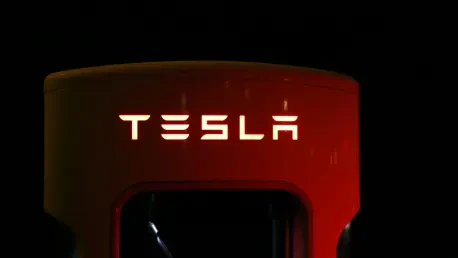The electric vehicle market has seen significant developments as investors attempt to navigate rapid changes and unpredictable futures. Tesla, a prominent player in this sector, faces particular scrutiny as challenges mount. Amidst these turbulent times, Ross Gerber, a notable investment figure once bullish on Tesla, has taken a surprising bearish turn despite an upturn in Tesla’s stock price. This shift highlights key concerns about Tesla’s current business strategy and market position, emphasizing the delicate balance between optimism and market realities.
Understanding the Shift in Ross Gerber’s Investment Strategy
Ross Gerber, initially a staunch supporter of Tesla and its innovative approach, has reevaluated his investment strategy, signaling a dramatic change in his stance. Having previously touted Tesla’s potential, Gerber has now shifted toward a more cautious approach, divesting a significant number of his shares even as the company’s stock price rises. This decision reflects his unease about the fundamental aspects of Tesla’s operation, which, despite the stock surge, fail to reassure him.
Recent trends in Tesla’s stock performance illustrate this tension. The stock experienced a 52% rebound after suffering a substantial decline earlier, yet Gerber remains skeptical, indicating that these price movements lack a foundation in genuine growth or strategic advancement. As a result, his firm, Gerber-Kawasaki Wealth and Investment Management, opted to offload over 26,000 shares in the initial period of the year, marking a notable shift toward a more cautious investment approach.
Core Factors Influencing Gerber’s Bearish Stance
Gerber’s reservations center around several core issues, prominently including Tesla’s Full-Self Driving technology. He harbors concerns regarding the system’s reliability, exacerbated by ongoing legal challenges and consumer feedback on its effectiveness. As autonomous driving forms a cornerstone of Tesla’s future business model, these unresolved technological glitches represent a significant barrier to confidence.
Another pressing issue in Gerber’s assessment is the troubling trend in Tesla’s sales performance. With vehicle sales in the U.S. down by 8.6% from last year, accompanied by similar declines in Europe, the data suggest underlying problems with consumer demand. These sales figures shed light on a potentially weakening market interest, reinforcing Gerber’s cautious approach to the stock despite its recent upturn.
Competitive pressure in the electric and autonomous vehicle sectors further compounds Gerber’s concerns. As Tesla attempts to penetrate the burgeoning robotaxi market, it faces formidable competition from established players. The competition presents a challenge to Tesla’s ambition, posing risks that Gerber believes could hinder the realization of its aggressive growth strategies.
Broader Concerns About Tesla’s Business Strategy and Leadership
Gerber’s skepticism transcends immediate financial metrics, touching on strategic leadership under CEO Elon Musk. Despite Musk’s influential presence, Gerber remains apprehensive about the long-term implications of his strategic choices. Leadership shifts within Tesla did spur short-term stock price increases, yet Gerber questions whether these changes address the underlying strategic challenges facing the company.
The potential need for a refreshed leadership approach is evident in Gerber’s perspective. He advocates for leadership that is less embroiled in public controversies and more attuned to the nuanced demands of Tesla’s core business. For Gerber, strategic recalibration is essential to reinforce investor trust and steer the company away from potential turbulence.
The Impact of Market Dynamics on Tesla’s Competitive Edge
Tesla operates in a rapidly transforming industry where market dynamics dictate strategic adjustments. Gerber’s analysis considers new entrants in the electric vehicle space, who chip away at Tesla’s once-dominant early-mover advantage. These competitive dynamics raise questions about how well Tesla can maintain its innovative streak while managing heightened competition.
Tesla’s response to these industry changes is under scrutiny. Gerber observes Tesla’s efforts to keep pace with technological advancements and evolving consumer expectations but remains wary of whether these initiatives can sustain long-term competitiveness. Adapting to these dynamics requires a delicate balance between innovation and practical implementation, a balance Gerber believes Tesla must recalibrate.
Future Outlook for Tesla and the Electric Vehicle Industry
Looking ahead, the potential for growth within the electric vehicle industry is undeniable, yet it comes with inherent challenges. Gerber sees opportunities for innovation but warns that Tesla must navigate these with strategic dexterity. His predictions suggest that Tesla’s ability to leverage its strengths amid a growing competitive landscape remains uncertain.
His insights bear implications for investors, cautioning them to consider the broader market complexities and potential headwinds. As Tesla attempts to forge its path, Gerber underscores the importance of strategic vigilance, emphasizing a need to balance ambition with market realities.
Conclusion
The analysis of Ross Gerber’s investment shift offers critical insights into Tesla’s current standing in the electric vehicle market. Gerber’s actions underscore the need for cautious evaluation of both optimistic projections and fundamental business structures. Investors are advised to stay informed about market trends, leadership dynamics, and competitive forces. As the electric vehicle arena progresses, strategic planning and realistic assessments will be crucial for navigating the future landscape.









